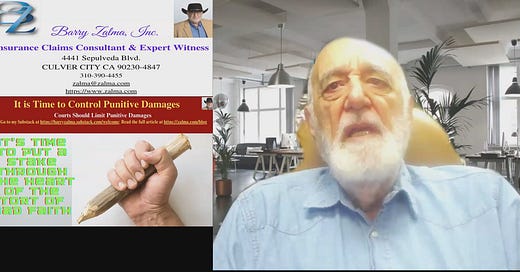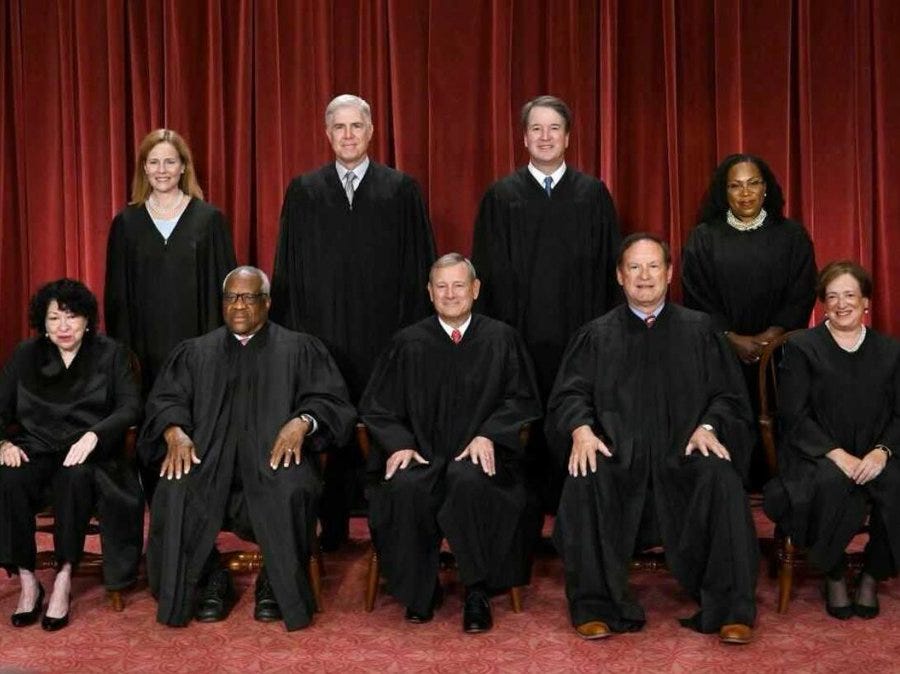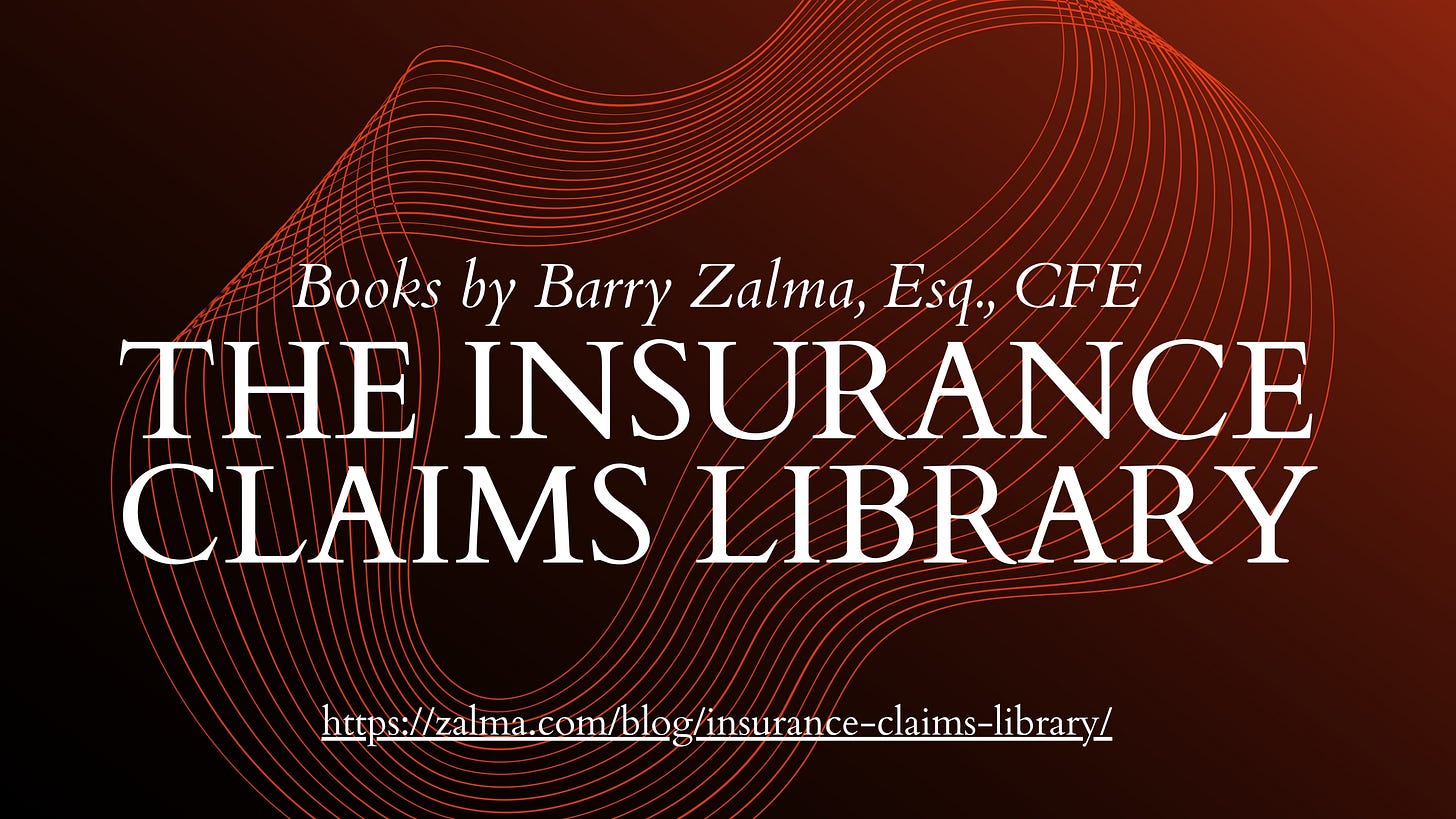Read the full article at https://lnkd.in/g9Njunza, see the full video at https://lnkd.in/gYr_8GtK and at https://lnkd.in/gV2sWs8g and at https://zalma.com/blog plus more than 4700 posts.
Post 4741
The US Supreme Court has clearly stated that “[p]unitive damages may properly be imposed to further a State’s legitimate interests in punishing unlawful conduct and deterring its repetition.” [BMW of North America, Inc. v. Gore, 517 U. S. 559.] These damages often exceed the fines assessed by the state if the same person had acted criminally to damage the plaintiff.
The skills of plaintiff’s trial lawyers have convinced juries to award damages in sums that exceed the annual budget of Greece. The jury assesses the enormous damages because it becomes inflamed by the wrongful conduct of the defendant and agrees with the lawyer’s suggestion that the jury “teach the defendant a lesson” to stop it from doing the same to others. The argument has been successful in thousands of suits brought from Vermont to California and Florida to Washington.
For years punitive damage awards were unlimited. A $40 compensatory damage award resulted in a $5,000,000.00 punitive damages verdict. Some juries assessed billions of dollars in punitive damages with no constraint from the courts other than the wealth of the defendant.
In 2003 the US Supreme Court limited punitive damages in the United States when in State Farm Mutual Automobile Insurance Co. v. Campbell, 123 S.Ct. 1513, 538 U.S. 408, 155 L.Ed.2d 585 (U.S. 04/07/2003) by a 6-3 vote, overturned a $145 million verdict against an insurer. The Supreme Court concluded that a punitive damages award of $145 million, where full compensatory damages were $1 million, is excessive and violates the Due Process Clause of the Fourteenth Amendment.
Justice Kennedy, writing for the majority limited the ability of state and federal courts to award huge punitive damages awards and concluded that it was improbable that a punitive damage award more than a single digit multiplier of the compensatory damages award would seldom, if ever, pass the due process test. The Supreme Court, in BMW of North America, Inc. v. Gore, supra, set forth specific tests that must be met before punitive damages could fulfill the requirements of due process.
The State Farm Mutual Automobile Insurance Co. v. Campbell case arose out of an automobile accident where one party was killed and another severely injured. The Campbells, insured by State Farm attempted to pass six vehicles on a two-lane highway, failed, and caused the driver of an oncoming car to drive off the road to escape collision with the Campbells’ vehicle. The Campbells only had $25,000 coverage per person and $50,000 in the aggregate. The Campbells felt they were not at fault because there was no contact between the two vehicles. State Farm ignored the advice of its adjuster and counsel to accept policy limits demands and took the case to trial. The verdict at trial was more than $180,000 and the State Farm appointed counsel told the Campbells to put their house on the market since they would need the money to pay the verdict. State Farm refused to pay the judgment and to fund an appeal. The Campbells retained personal counsel to pursue an appeal that was not successful, entered into a settlement with the plaintiffs where the plaintiffs agreed to not execute on their judgment in exchange for an assignment of 90% of all money received in a bad faith action by the Campbells against State Farm. Before suit was filed, State Farm paid the full judgment.
At trial, the plaintiffs brought in evidence of actions of State Farm in first party cases across the country, in third party cases not similar to the Campbells’ auto accident and other evidence not related to the facts of their case.
The Supreme Court found that State Farm’s “handling of the claims against the Campbells merits no praise,” but concluded “a more modest punishment could have satisfied the State’s legitimate objectives “instead, this case was used as a platform to expose, and punish, the perceived deficiencies of State Farm’s operations throughout the country. However, a State cannot punish a defendant for conduct that may have been lawful where it occurred.”
State Farm Mutual Automobile Insurance Co. v. Campbell created a major, precedent changing, limitation on the right of a jury to assess punitive damages settling limits on total amounts that can be assessed and the types of wrongful conduct a jury can consider.
In determining the constitutional maximum for a particular punitive damage award under the due process clause, we are directed to follow three guideposts:
(1) the degree of reprehensibility of the defendant’s misconduct;
(2) the disparity between the actual or potential harm suffered by the plaintiff and the punitive damages award; and
(3) the difference between the punitive damages awarded by the jury and the civil penalties authorized or imposed in comparable cases.
The Ratio of Punitive Damages to Actual or Potential Harm
Punitive damages must bear a reasonable relationship to compensatory damages or to the plaintiff’s actual or potential harm. Courts must ensure that the measure of punishment is both reasonable and proportionate to the amount of harm to the plaintiff and to the general damages recovered.
Juries are often mislead that the poor victim of an insurer’s bad faith will be able to enjoy the compensation. After paying a contingency fee to counsel and state and federal income taxes the plaintiff recovers little or nothing of the punitive damages.
ZALMA OPINION
Although punitive damages serve a public purpose and deter wrongdoers from wrongful conduct the use of punitive damages in insurance bad faith cases has, in my opinion, done little to deter wrongdoing by insurance companies.
It is time to put a stake in the heart of the tort of bad faith. Insureds who are wronged by their insurer should limit their recovery to contract damages. They should be compelled to waive the tort and sue in assumsit. If the tort of bad faith must exist it must be applied equally. The abuse of the tort of bad faith has become so extreme that the tort must be eliminated or otherwise made fair.
Adapted from my book the Insurance Bad Faith and Punitive Damages Deskbook available at fastcase.com bookstore.
(c) 2024 Barry Zalma & ClaimSchool, Inc.
Please tell your friends and colleagues about this blog and the videos and let them subscribe to the blog and the videos.
Subscribe to my substack at https://barryzalma.substack.com/publish/post/107007808
Go to Newsbreak.com https://www.newsbreak.com/@c/1653419?s=01
Go to X @bzalma; Go to the podcast Zalma On Insurance at; Go to Barry Zalma videos at Rumble.com at https://rumble.com/c/c-262921; Go to Barry Zalma on YouTube- https://www.youtube.com/channel/UCysiZklEtxZsSF9DfC0Expg; Go to the Insurance Claims Library – http://zalma.com/blog/insurance-claims-library.
Please tell your friends and colleagues about this blog and the videos and let them subscribe to the blog and the videos.
Go to X @bzalma; Go to Newsbreak.com https://lnkd.in/g8azKc34; Subscribe to my substack at https://lnkd.in/gcZKhG6g
Go to the Insurance Claims Library – https://lnkd.in/gwEYkxD.
Please tell your friends and colleagues about this blog and the videos and let them subscribe to the blog and the videos.
Subscribe to my substack at https://lnkd.in/gcZKhG6g
Go to X @bzalma; Go to Newsbreak.com https://lnkd.in/g8azKc34; Subscribe to my substack at https://lnkd.in/gcZKhG6g,
Go to the Insurance Claims Library – https://lnkd.in/gwEYkxD.


















Share this post